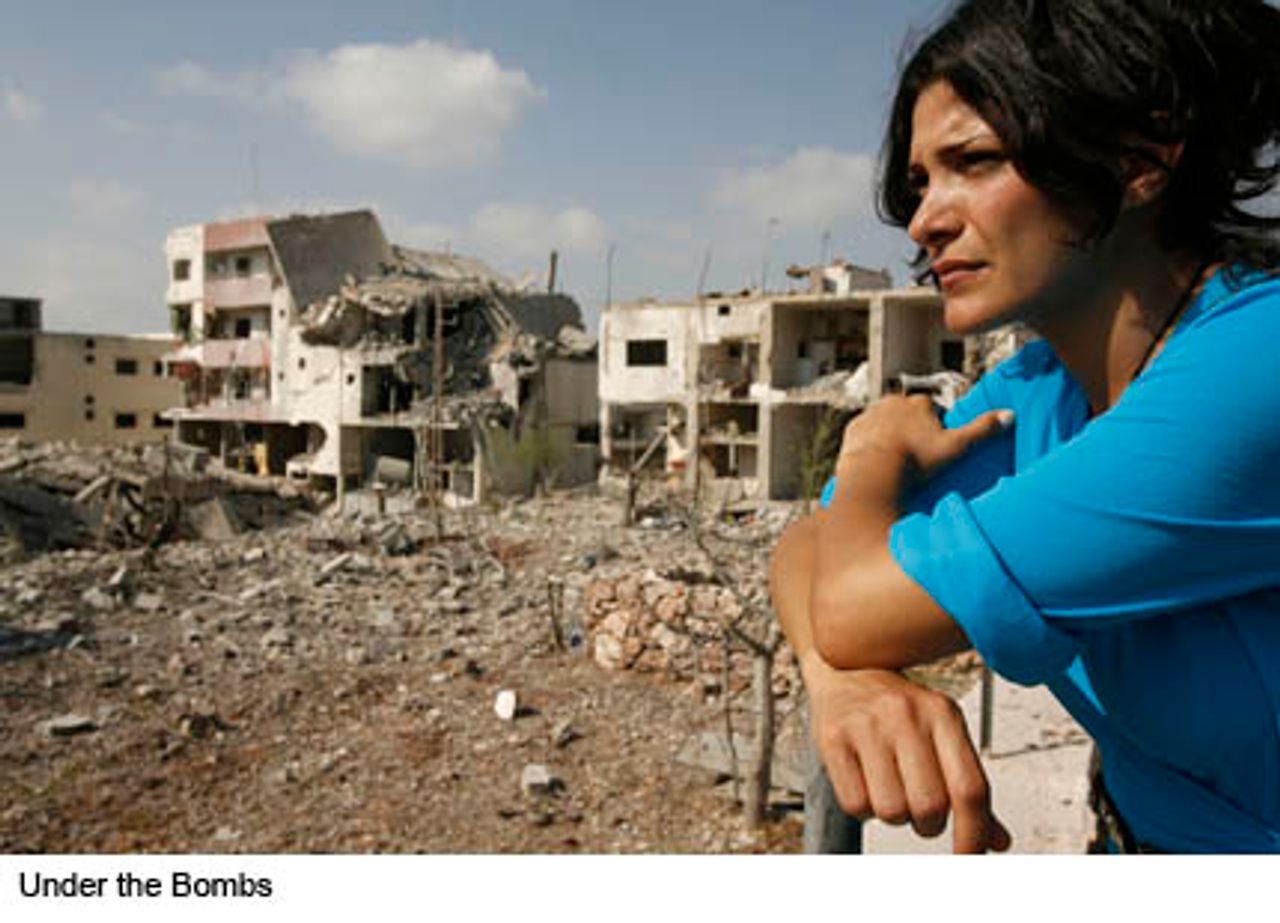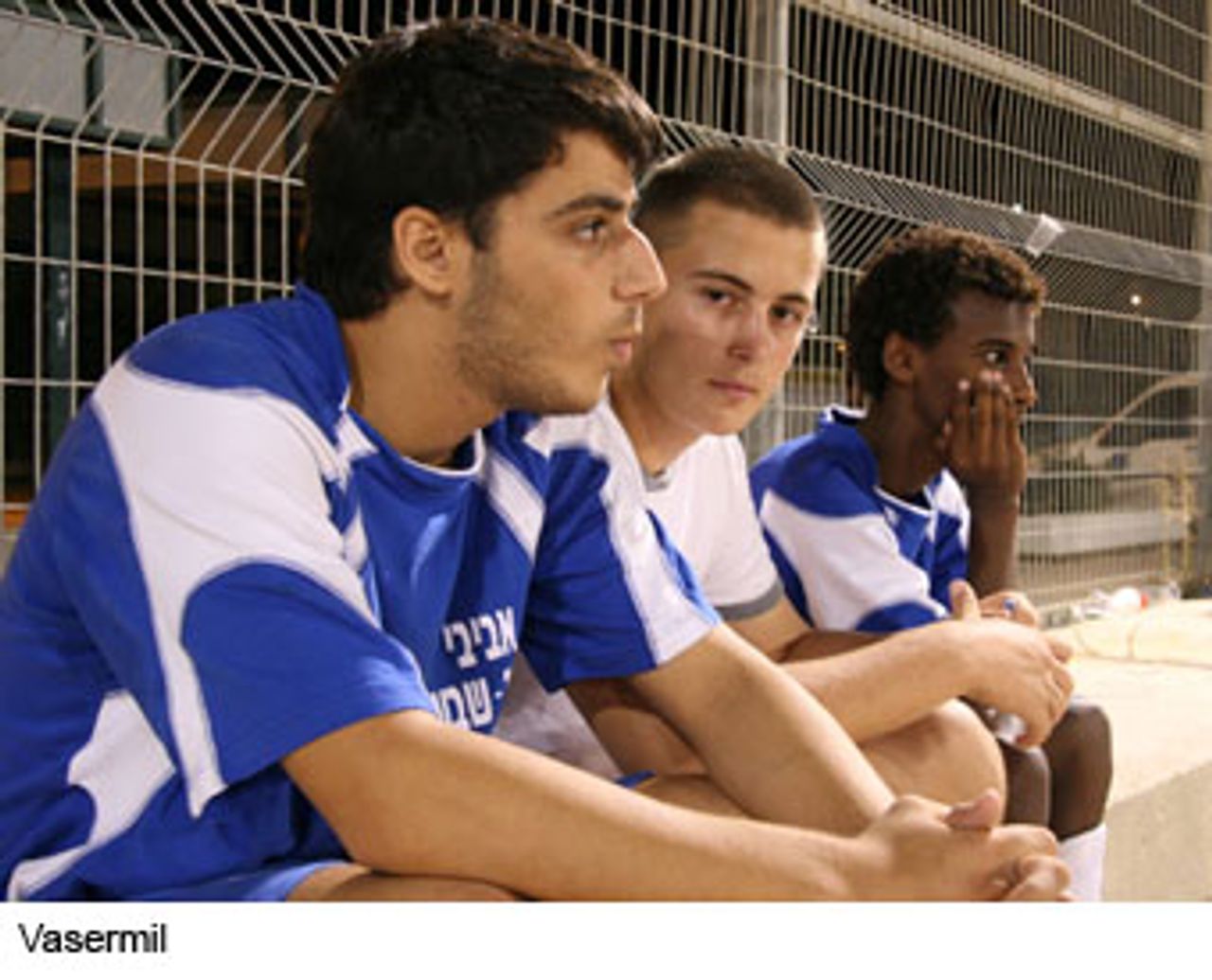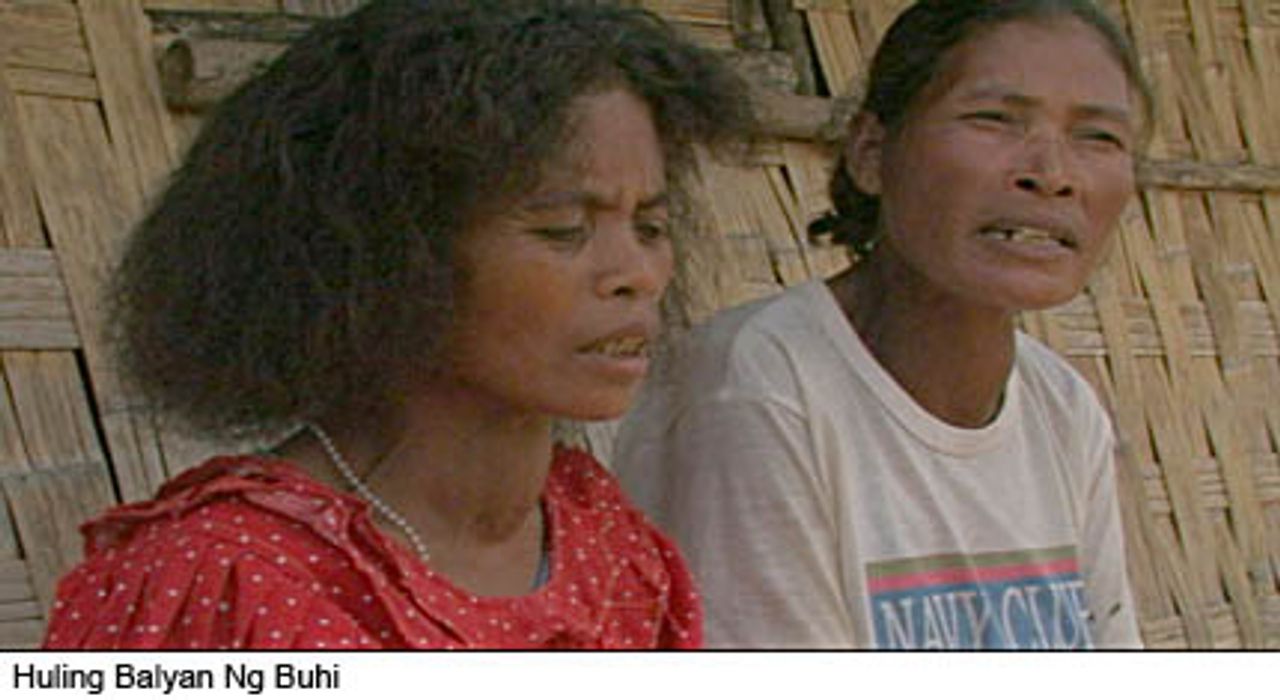This is the first of a series of articles on the 2008 San Francisco International Film Festival, held April 24-May 8.
The recent San Francisco film festival, its 51st, screened some 177 films from 49 countries. The festival bestowed awards on director Mike Leigh, screenwriter Robert Towne and actress Maria Bello, among others.
The most interesting films we were able to see came from Brazil (Mutum), Lebanon (Under the Bombs), Israel (Vasermil), the Philippines (Huling Balyan Ng Buhi: Or The Woven Stories of the Other), China (Umbrella), Malaysia (Flower in the Pocket), Greece (Valse Sentimentale), Mexico (Cochochi), India (Calcutta, My Love), Japan (Glasses), France (All is Forgiven) and South Korea (Shadows in the Palace).
The better contemporary art or independent films are naturally varied in approach and theme, in overall style as well. Yet the variations, viewed from the widest angle, are not as great as one might expect or even hope for. Many of the films seem to emanate, so to speak, from the same portion of the electromagnetic spectrum. This demonstrates in the first place the primacy of the objective circumstances in which the artists matured and developed, and which help shape their work.
The largest category treats the individual lives of ordinary people (often children or adolescents), without bombast, over the course of a few days, weeks or months. Non-professional actors often are involved. Sets, if any, and costumes and camera movement are kept to a minimum. (Calcutta, My Love, which attempts to deal with a period in Indian political and cultural history, and Shadows in the Palace, an elaborate costume drama, are the most obvious exceptions here.) Budgetary issues and in some cases inexperience play a certain role, but there is more to it than that. As we’ve pointed out before, a kind of self-regulating—occasionally, overly self-conscious—minimalism is at work.
An increasing number of films globally are taking a serious approach to social life and the conditions under which vast numbers of people live. The filmmakers often bring more compassion to bear than they do historical or social insight. That’s to be expected after a quarter-century or more of ideological reaction. The painful facts of present-day life—war, oppression, social inequality—have taken the artists, in many cases, unawares. This is not perhaps what they expected to be considering. They are a little awkward with the material, over-cautious, even timid.
The writers and directors in general are still loath to make generalizations or draw conclusions. They say, ‘Here is a small picture, a detail—make of it what you will.’ The confidence to draw broader conclusions was knocked out of cinema and the other arts by the traumatic events of the middle and late 20th century. In recent decades everything weak and vulnerable within these social layers has been played upon—their self-involvement, insularity, impressionism.
The deepest critique of society, at least in America, was criminalized or made taboo. A good many in the film industry, including its ‘independent’ wing, became wealthy and had even less reason to concern themselves with great social problems. The argument that the world couldn’t be altered anyway, and that every effort at improving society or perfecting humanity had simply led to disaster, proved far too tempting for individuals whose bank accounts happened to be swelling.
Along with all that came an assault on the idea that art could or ought to attempt to arrive at objective truths. The notion that art works reflect an external reality and that a chief responsibility of the artist is to communicate something essential about that reality—a simple, and one might say, obvious enough, conception—has come under ferocious attack for decades.
Now there is a change, brought about by new shocks and big events. The social order that promised the ‘end of history’ and a new Golden Age threatens to hurl humanity back into the hell of world war, dictatorship and mass suffering. People see and feel the reality in front of them. No one believes the governments or any official institution or spokesperson. But what then?
The artists don’t know yet. They still know better what they disbelieve, what they reject. Many art or independent films today tend to be defined by what they won’t be or do: they won’t make large statements; they won’t aspire to the epic or panoramic; they won’t insist on any social or political viewpoint; they won’t attempt to ‘explain’ (a word always placed in inverted commas) any social or historical process. Of the group mentioned above, the French film, All is Forgiven, follows this program with the most determination.
Not everything here is wrong. Propaganda ‘art,’ at the service of vile regimes, did grievous damage in the last century. Terrible betrayals occurred. And even at a less catastrophic level, much of the pre-war socially conscious art (influenced by or oriented to Stalinism or social democracy) was passive, uninspired, and pat. An injection of the personal, the spontaneous, the authorial eye (and I) was healthy, and, at any rate, inevitable.
However, once the principle of ‘independent’ or ‘authorial’ filmmaking has been established, and no one has any interest in politically or ideologically supervising the artist, the latter still has to arrive at definite conclusions about the present human condition. Or face stagnation. Once the newness and liveliness of the activity wear off a little, a deeper uncertainty and passivity remain. And so does the following question: what’s to be done about the existing state of things?
A good deal of the relative sameness of international art filmmaking comes from the tacit agreement about what must not be done. The primitiveness, the tentativeness of the social outlook and artistic means give a good many films a similar look and feel. Plants that have not yet blossomed bear more resemblance to one another than flowering ones. Filmmaking has not yet drawn itself up to its full height. But there are hopeful signs. Efforts are being made.
New directors for the most part
In general, and this is perhaps a positive sign, the better films at San Francisco often came from first-time feature directors, sometimes from a younger generation.
Mutum, directed by Sandra Kogut (who has previously made short films and documentaries), is the story of a ten-year-old boy and his family in an impoverished part of Brazil. Kogut—born in 1965 of Hungarian descent and now residing in Paris—sensitively presents the details of life, which include jealousy, casual violence and tragedy. The boy’s father is rough on his son, but, as the director explains, not out of malevolence, but because “he believes that sensitivity is a luxury he can’t allow himself” under the harsh conditions. This is a realistic work, but not a drab or passive one.

This is the second year in a row that a valuable film from Brazil was screened in San Francisco, following up on last year’s Love for Sale: Suely in the Sky (directed by Karim Aïnouz).
Lebanese director Phillippe Aractingi began filming Under the Bombs ten days into the savage Israeli assault on Lebanon in the summer of 2006. For his second feature film, Aractingi (born 1964) rapidly invented a story about an affluent woman, who has been abroad, looking for her family in southern Lebanon. She hires the only taxi driver willing to undertake the dangerous trip. The scenes of devastation are especially striking. This is also an intelligent and sensitive work, without a specific political agenda, except revulsion at brutality.

Vasermil, from Israel, recounts the story of three teenagers—an Israeli-born pizza deliveryman, an Ethiopian responsible for his mother and brother and a Russian involved with drugs and local lowlifes—connected by a local soccer team. Directed by Mushon Salmona, the film’s picture of Israeli everyday life, dominated by seething social tensions and verbal or physical violence (not to mention fairly pervasive racism), is a stark one.

Huling Balyan Ng Buhi: Or The Woven Stories of the Other is an effort to deal poetically with life in the southern Philippines. Various groups and individuals intersect in the film, written and directed by the youthful Sherad Anthony Sanchez (born 1984 in Davao City), including members of an armed guerrilla band, a military unit, a shaman and two children lost in the forest. Sanchez’s film is ambitious and not entirely successful, but it is a promising effort. Filipino cinema has been in the doldrums for years.

The Chinese documentary Umbrella, directed by Du Haibin, examines growing social inequality and other problems in the aftermath or midst of ‘economic reform,’ i.e., the sweeping introduction of market economics. In its opening sequence, we see a sign bearing a government slogan, “Social stability is above everything.” The umbrella of the title is evidently an ironic reference to the new China, which presumably is able to shelter differing groups.
More mundanely, the film contains scenes of monotonous, ill-paid labor in an umbrella factory in Guangdong province and also visits the shop that sells the umbrellas, where some dreadful female examples of the Chinese nouveau riche talk about their cars, their “hubbies” and their money. Outside women and girls shine shoes for pennies. In his notes, the director points out that under the government’s policy of “encouraging a small part of the people to get rich first,” the gap between rich and poor has “widened rapidly.”
There are interesting moments in the film, which also takes a brief look at conditions in higher education, the countryside and the army, but it seems as a whole rather scattered and stretched thin.
Liew Seng Tat’s Flower in the Pocket, from Malaysia, is a slight but mischievous film about two young boys. Their laconic father (the mother is absent), who works endless hours repairing mannequins, leaves them more or less on their own. As the film’s notes put it, “the two brothers grow up with all the freedom of neglected children. They roam the streets, get into fights and other trouble in school.” Eventually, before it’s too late, the father realizes he’d better pay some attention. A number of amusing and lifelike sequences take place along the way. The director is young as well, born in 1979.
The Greek film, Valse Sentimentale, directed by Constantina Voulgaris (also born in 1979), is perhaps slight too, but it has some heart. Its subject is a global phenomenon: youngish people who have no particular beliefs, ambitions or prospects, but, still, they have to get by somehow. Stamatis and Electra stumble into each other in Exarchia, a bohemian Athens neighborhood. He’s something of an artist, who seems allergic to attachments of any kind. She seems even less directed in life. They manage to hold on to each other precariously, at least for the duration of the film. Voulgaris, the daughter of a well-known Greek filmmaker, admires the work of Ken Loach and says, according to an article in the press, “that she would like her films to be closer to realism.”
Cochochi, from Mexico, is a sincere but excessively minimalist work. It also follows two young brothers, who belong to an indigenous community in the country’s rural northwest. After their primary school graduation, which one of the brothers skips (although he has received a scholarship to go on with his education), the pair are sent on a mission to deliver some medicine to a distant village. They borrow their grandfather’s horse, which they proceed to lose. They separate to look for him.
Perhaps inspired by Iranian cinema, the first-time co-directors, Israel Cárdenas and Laura Amelia Guzmán (both born in 1980), however, do not tamper sufficiently with the events and characters to engage the spectator deeply. The work threatens to be mere ethnography, rather than a fully developed artistic interpretation of life. Clearly, however, a good deal of dedication and hard work have gone into the filming.
Goutam Ghose’s Calcutta, My Love (Kaalbela) is a more ambitious work. The director attempts to represent the turbulent years of the early 1970s, when the Naxalite Maoist movement emerged in West Bengal out of the older Stalinist parties. Ghose’s protagonist, Animesh, is a youth from a middle class rural family who begins college in Calcutta. He is drawn to art, love and revolutionary politics.
The 165-minute film, carved out of an original 10-part television series, follows Animesh through various convolutions, including his final arrest and incarceration for guerrilla activities. Much of the material is fascinating, if somewhat sensationalized and simplified, and the work deals with political debates more seriously than any American and most European efforts devoted to that period.
However, the director’s own attitude toward the history (and toward the Maoists themselves, where it veers between irony and uncritical sympathy) is unclear. In his notes, he writes, “In today’s hardcore materialistic society, I cherish the memories of a romantic era ... Only love and compassion remain bright in our memory, collective or individual, recent or ancient.” Well, that isn’t very satisfactory and the somewhat romanticized version of events tends to confirm the difficulties. Still, a more systematic viewing and analysis of Calcutta, My Love, perhaps all four hours of it, would be worthwhile.
The Japanese have been making a great many bad films in recent years. Glasses, by Naoko Ogigami is unlikely to reverse that process by itself; the film is too eccentric and slim, but it’s a generally pleasant experience. The film is a kind of Mr. Hulot’s Holiday (Jacques Tati) in reverse. A respectable officer worker, Taeko, who wears glasses of course, arrives at a small resort hotel and is taken aback, at first, by its singular operations.
The owner is amiable enough, but makes few efforts on his guests’ behalf. He tells Taeko to leave her suitcase on the sand, and she finds it still sitting there some time later. When she arrives, he is preparing a tempting meal; she assumes it is for her and the other guests. No such luck—he carries off the meal and tells her to help herself to the contents of the refrigerator, which turn out to be one large, dead fish. She’s later informed cheerfully that there is no sightseeing in the area because there is nothing to see. Every morning the guests take part in oddball “merci exercises” on the beach and spend much of the rest of the time “twilighting” (ruminating in the open). Eventually, Taeko too learns the advantages of non-conformism ... and loses her glasses.
All is Forgiven (Mia Hansen-Love), as noted above, is a serious effort, but tries too hard to follow the program of explaining and contextualizing nothing. The story involves a couple—he’s a French poet and she’s Austrian—their daughter, and the family’s eventual disintegration. Victor takes drugs and doesn’t do much to earn a living. The strain proves too great and Annette breaks decisively from her husband, taking the little girl. Years later, the daughter has the opportunity to meet her father. Then tragedy strikes.
The film is authentic enough, but too little is provided and the details of the story don’t necessarily jibe. Is it impermissible to ask the director to offer some clues as to the source of Victor’s unhappiness? In an interview, Hansen-Love speaks of “cutting to the chase and staying focused on the essential.” The category of the essential includes as well social and psychological causation, not simply the immediate facts.
Shadows in the Palace is set in Korea some centuries ago, in a forbidding palace where fierce and inflexible hierarchy prevails. The death of a court maid leads one of the other women, a court nurse, to launch an investigation that leads her onto dangerous and terrifying ground. The film, directed by Kim Meejeung, takes its work seriously. One assumes that Kim, in depicting brutal social relations, which threaten to crush the life out of everyone and where coercion and torture are everyday practices, has contemporary South Korean life somewhere in her thoughts.
In her notes, she explains that she wanted “to bring to light the stories of neglected and hidden people’s lives in history.” She goes on to note that “we too may be living in a modern day dark ‘palace’ much like the court ladies.”
We’ll discuss some of these films in more detail in subsequent articles.
To be continued
